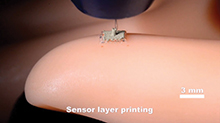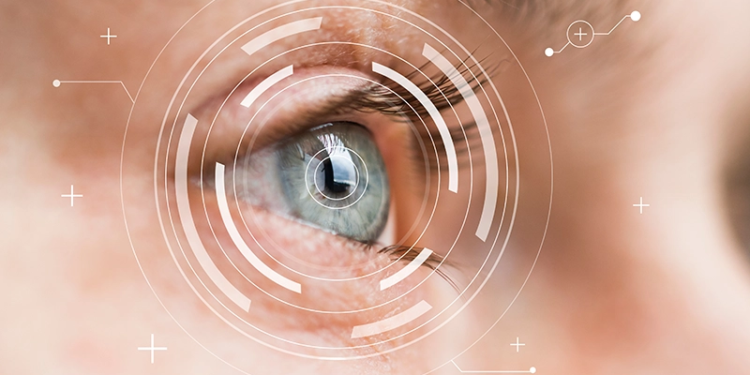Engineering researchers at the University of Minnesota have developed a process for 3D printing of stretchable electronic sensory devices that could give robots the ability to feel their environment. The technique is also a major step forward in printing electronics on human skin and has implications for use with prosthetic limbs, said Michael McAlpine, PhD, a University of Minnesota (UMN) mechanical engineering associate professor and lead researcher on the study, which will be published in the next issue of Advanced Materials and is currently online.
“Putting this type of bionic skin on surgical robots would give surgeons the ability to actually feel during minimally invasive surgeries…instead of just using cameras like they do now. These sensors could also make it easier for other robots to walk and interact with their environment,” said McAlpine.
“While we haven’t printed on human skin yet, we were able to print on the curved surface of a model hand using our technique,” McAlpine said. “We also interfaced a printed device with the skin and were surprised that the device was so sensitive that it could detect your pulse in real time.”
McAlpine and his team made the sensing fabric with a 3D printer they built in the lab. The multifunctional printer has four nozzles to print the various specialized “inks” that make up the layers of the device—a base layer of silicone, top and bottom electrodes made of a conducting ink, a coil-shaped pressure sensor, and a sacrificial layer that holds the top layer in place while it sets. The supporting sacrificial layer is later washed away in the final manufacturing process. All of the layers of “inks” used in the flexible sensors can set at room temperature. These flexible 3D-printed sensors can stretch up to three times their original size.
“This is a completely new way to approach 3D printing of electronics,” McAlpine said. “We have a multifunctional printer that can print several layers to make these flexible sensory devices. This could take us into so many directions from health monitoring to energy harvesting to chemical sensing.”
Researchers say the best part of the discovery is that the manufacturing is built into the process. Their next step is to move toward semiconductor inks and printing on a human body.
Editor’s note: This story was adapted from materials provided by UMN.

A screenshot of video showing 3D printing of the stretchable electronic sensory device.Image courtesy of McAlpine and Shuang-Zhuang Guo, UMN.
Support authors and subscribe to content
This is premium stuff. Subscribe to read the entire article.




